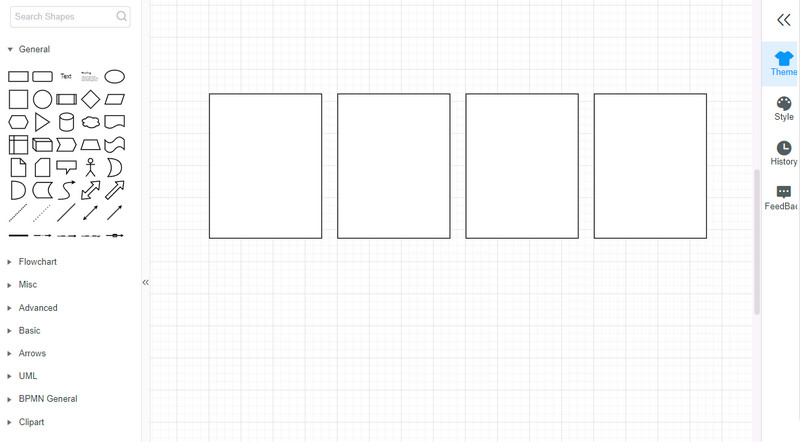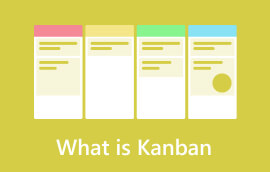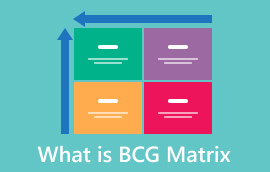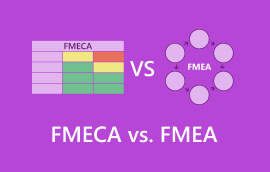Kanban vs. Agile vs. Scrum [Complete Details & Comparison]
Agile, Kanban, and Scrum are three of the most popular project management frameworks. Throughout the project, there are tons of decisions you need to make. One of these is to select the right project management methodology for you and your teammates. It can be daunting if you’re new to managing a project. Now, if you’re still unsure and not yet knowledgeable, do not fret. In this article, we’ll help you understand these methodologies. Also, don’t miss out on learning the differences between Agile vs Scrum vs Kanban. So, without further ado, let’s head to the details.

- Part 1. Overview of Kanban, Scrum, & Agile
- Part 2. Kanban vs. Scrum
- Part 3. Kanban vs. Agile
- Part 4. Best Tool for Kanban Making
- Part 5. FAQs About Agile vs. Scrum vs. Kanban
Part 1. Overview of Kanban, Scrum, & Agile
What is Agile
Agile isn’t just a project management methodology. Rather, it is a mindset. At its core, Agile focuses on flexibility, adaptability, and customer collaboration. It is an approach that breaks down large projects into smaller components. Then, give the teams specific tasks or these smaller components to handle and work with. Thus, it promotes teamwork within a business or organization. Agile also aims to refine and speed up the process of completing the projects. It is also open to changes and encourages continuous feedback from the end users.
What is Scrum
Now, Scrum is a framework, not a methodology. It is a form of Agile project management. It emphasizes a structured framework for product development. To use it, the entire team needs to have a deep understanding and value agile principles. Scrum introduces specific roles, ceremonies, and artifacts. It is characterized by short development cycles called sprints. It is also known for its dedication to delivering potentially shippable increments.
What is Kanban
Kanban, on the other hand, offers a visual and flow-based approach to project management. Kanban uses boards with columns and cards to visualize tasks and their progress. Unlike Agile and Scrum, Kanban doesn't prescribe specific roles, ceremonies, or time-bound iterations. Instead, it's all about maintaining a steady flow of work. At the same time, focusing on limiting work in progress (WIP). Teams pull work as capacity allows and focus on completing tasks one by one. Kanban is popular for its adaptability and suitability.
The choice between Kanban, Scrum, and Agile depends on your team's goals. It also depends on the nature of your projects and your preferred management style. Let’s now move on to the difference between Agile and Kanban, as well as Scrum and Kanban.
Part 2. Kanban vs. Scrum
Kanban and Scrum are both part of Agile. These two frameworks aim to reduce waste by working in steps. They follow a process, and they also work in a way where you finish one thing before starting something new.
Work Structure
Kanban: Work is continuously pulled from a backlog, and there are no defined timeboxes. Work is done as capacity allows, and new tasks can be added at any time.
Scrum: Work is organized into fixed-length iterations called sprints. During a sprint, the team commits to a set of features or user stories. Plus, no new work is added to the sprint backlog once it begins.
Visual Management
Kanban: Relies heavily on visual boards to represent the flow of work, WIP limits, and bottlenecks. This visual management is a core aspect of Kanban.
Scrum: While Scrum also uses visual boards. The emphasis on visual management is not as strong as in Kanban.
Roles
Kanban: Kanban does not provide specific roles. Team members are usually cross-functional and may not have defined roles like in Scrum.
Scrum: Scrum defines distinct roles, including the Product Owner, Scrum Master, and Development Team. They have their own specific responsibilities.
The choice between Kanban vs. Scrum is yours to make. But keep in mind that you don't have to exclusively use one to manage projects.
Part 3. Kanban vs. Agile
Agile and Kanban share a common goal as flexible project management methods. They both emphasize adaptability, transparency, and a focus on delivering value to customers. Kanban and Agile can also easily adjust to changes. At the same time, ensuring everyone on the team knows what's happening. However, their key differences lie in their implementation.
Agile is a broader philosophy that encourages constant project management. It does not provide specific tools or processes. So, Agile is highly adaptable to various situations. Further, it emphasizes adaptability over sticking to a fixed plan. It is also a project management usually used for projects that always face changes.
Kanban, on the other hand, is a specific Agile methodology. Kanban offers practical tools and processes to implement Agile principles. It also provides a visual and flow-based approach to work. So, it helps teams manage tasks efficiently while maintaining a clear and balanced workflow. Kanban offers a more structured application of Agile principles for workflow management.
Part 4. Best Tool for Kanban Making
Are you planning to create a Kanban for your team but don’t know what tool to use? With that, we recommend you use MindOnMap. Here’s a visual presentation of Kanban made using this tool.

Get a detailed Kanban visual presentation.
MindOnMap is a free online diagram maker that allows you to create Kanban as well. You can access it on various browsers, such as Google Chrome, Microsoft Edge, Safari, and more. Apart from being the best tool for Kanban making, it lets you make several charts. It includes layouts like organizational charts, fishbone diagrams, treemaps, flowcharts, and so on. Not only that, it provides shapes, lines, text boxes, color fills, etc., that you can use. MindOnMap also enables you to insert links and images to make your diagram more understandable.
Furthermore, you can use MindOnMap in various scenarios. It includes relationship maps, note-taking, travel guides, and more. Also, the tool has an automatic saving feature. It means when you stop operating after a few seconds, it will save all the changes made. In addition, it offers a collaboration feature. That way, it is easier to share your work with your peers and colleagues. MindOnMap is perfect for your project management needs. So, start making your Kanban!
Secure Download
Secure Download

Further Reading
Part 5. FAQs About Agile vs. Scrum vs. Kanban
Why use Kanban instead of Scrum?
If you prefer a more flexible and less structured timeframe, you can use Kanban instead of Krum. Kanban also excels in dealing with various projects and workloads. Plus, it has no fixed roles, making it easier to implement.
Which is better, Kanban or Scrum?
Neither Kanban or Scrum is naturally better than the other. The choice between these two lies in your specific needs and preferences. If you’re looking for a tool that offers flexibility and is suitable for various situations, choose Kanban. Yet, if you prefer structured timeframes and defined roles, consider Scrum.
Why is Kanban better than Agile?
One of the main reasons why Kanban is better than Agile is it offers visual work-in-progress tracking. On the other hand, Agile does not support visual checking of work-in-progress projects.
Conclusion
Given these points, you have learned the difference between Kanban board vs Scrum vs Agile. Whatever project management you use, ensure that it will meet your team goals and workflows. Each of these can serve as a powerful partner in achieving effective and efficient management of projects. Also, if you’re looking for a dependable tool for Kanban making, MindOnMap is here for you. It offers a straightforward way of reviewing the process of project management. Further, you can make any diagrams with it. Finally, it suits both professional and beginner necessities.










